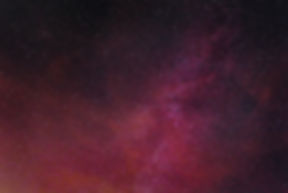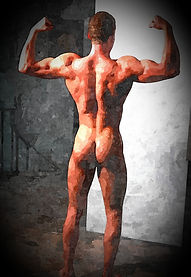
Click on an image to enlarge.

Any good artist (painter, sculptor, dancer, musician, poet, woodcarver, etc.) must have a good eye--not the physical eyes that allow us to see the world around us, but an inner eye that compels us to see beauty and truth as
they are meant to be seen--not merely a vision, but a new way of perceiving, interpreting, understanding, and interacting.
I begin my artwork by looking for images that have the potential to move people toward this greater understanding. A beautiful photograph may lend itself easily to such a painting or it may not. Great photographs do not always lead to great digital paintings. Similarly, a common or seemingly unappealing sketch may contain the seeds of a fantastic painting. That appeal may permeate the entire image, or it may be hiding in a small portion of it. That's what I look for, that seed of beauty.
Applying that inner eye
toward selecting just the
right image is 95% of the
creative process. Every-
thing else is just labor.*
Once I have selected the image, I begin prepping it for painting. I do this by cropping or deleting extraneous elements or adding elements that will augment the image. I may do a little bit of touching up to remove blemishes or change a color or shape slightly. I may also adjust the brightness/darkness. If the image is a photograph, I may leave it as a photograph or convert it to a line drawing, sketch, or cartoon. If it is already one of the latter, I may convert it to a full image. To carry out these tasks, I may use any number of a dozen different software programs, each one with its own strengths and weaknesses.
Now, I'm ready to start painting. Through my software, I have dozens of filters and


effects, producing a classical appearance or a modern one, representational or abstract, modern, pop, cartoonish, etc., each with scalable weights on a number of variables (lighting, intensity, color, texture, etc.) Sometimes I know in advance exactly what to go for. At other times I begin by applying a number of different filters separately to get a good idea of what the final image might look like. Then, I begin layering these filters and effects. I may choose one of the samples I have produced or select a new one, adjusting the variables as described above.
One filter may be enough, but this is rarely the case. So, I apply a different filter or effect on top of the foundational one, again adjusting all the variables, perhaps at 100%, or even 10%. This process produces a blend, a kind of hybrid. Once again, two filters or effects may produce the desired result, or I may have to continue the process as many as a dozen times, sometimes adding a new filter or effect, sometimes repeating one that I have already applied. For example, if I used a Renoir filter for the first layer, I may want to apply it again (with different variables) for the fifth layer.
The sequencing of these layers also can make a big difference, so I may go all the way back to the beginning and replace the filter for layer #1 with the filter I used for layer #6, depending on which features I want to bring to the foreground or push to the background. At each step along the way, any of the variables may be adjusted numerous times.
The entire process
is one of calibration,
reflection, and re-
calibration until I have
achieved a result that
I consider to be both
erotic and aesthetic.

*When collectors pay big bucks for a work of art, that inner eye, that vision, is what they are paying for.